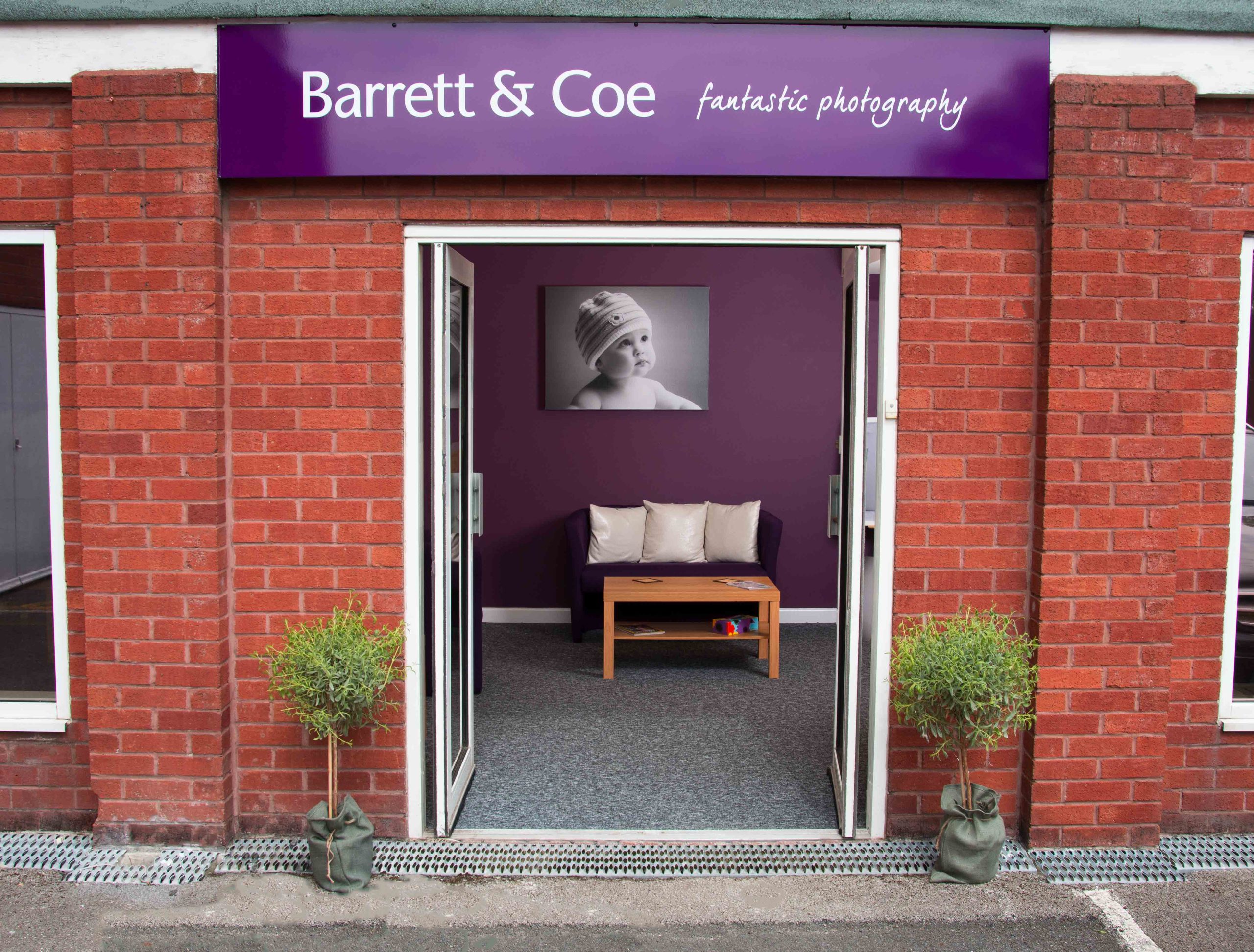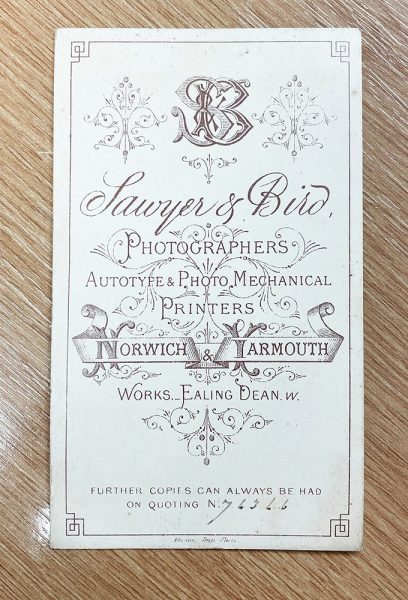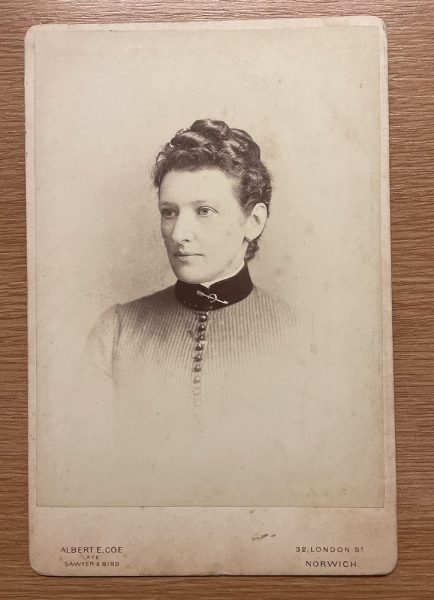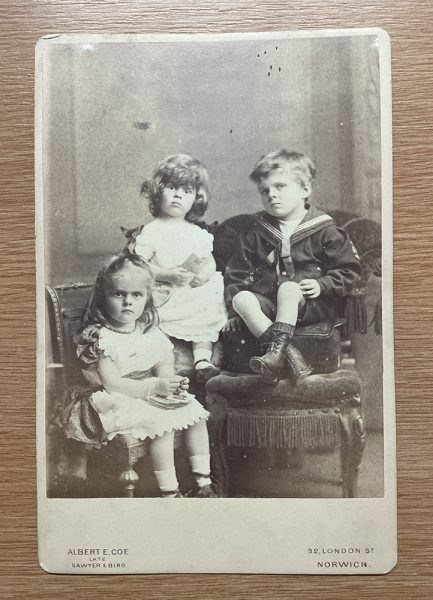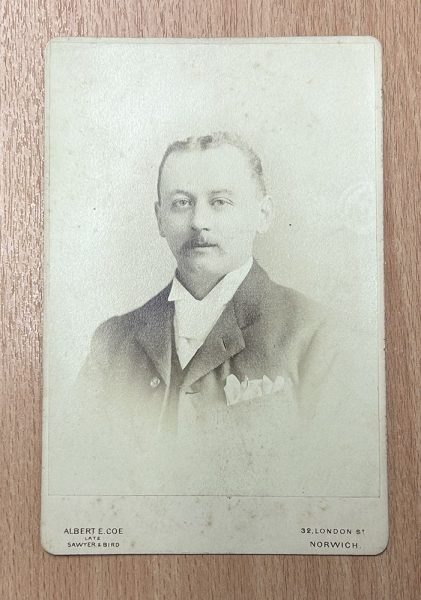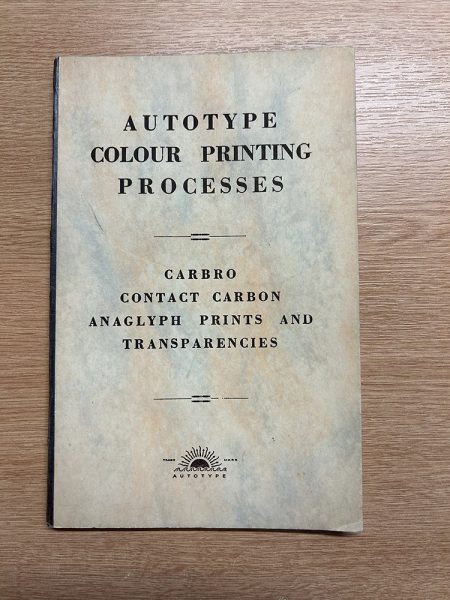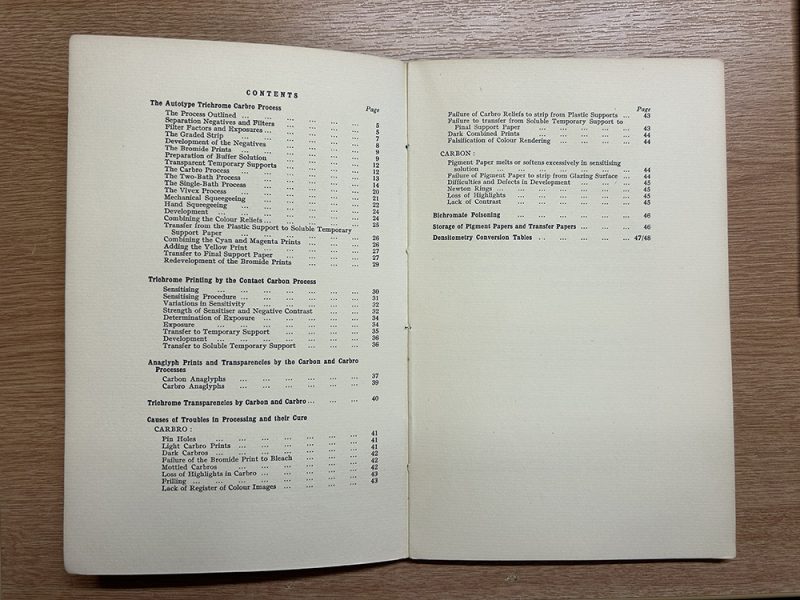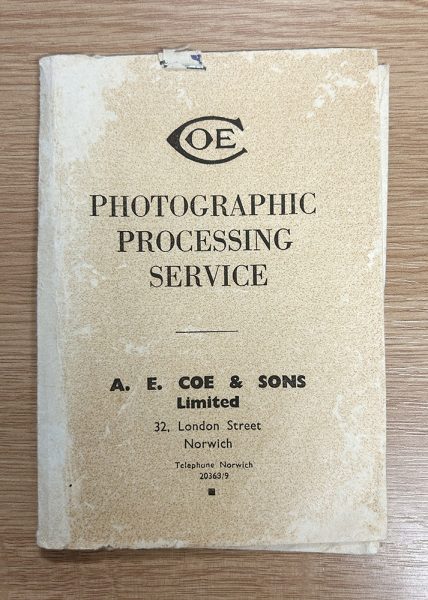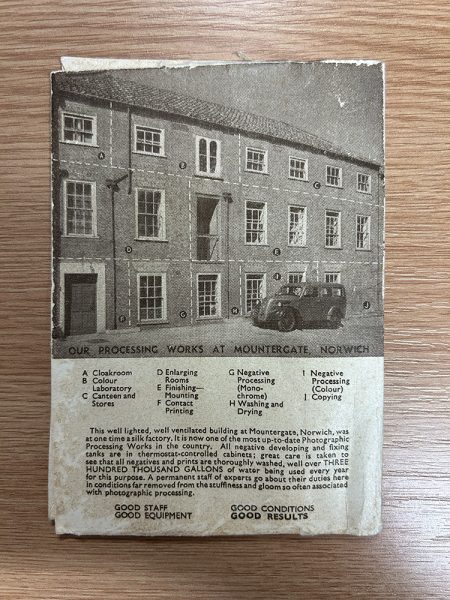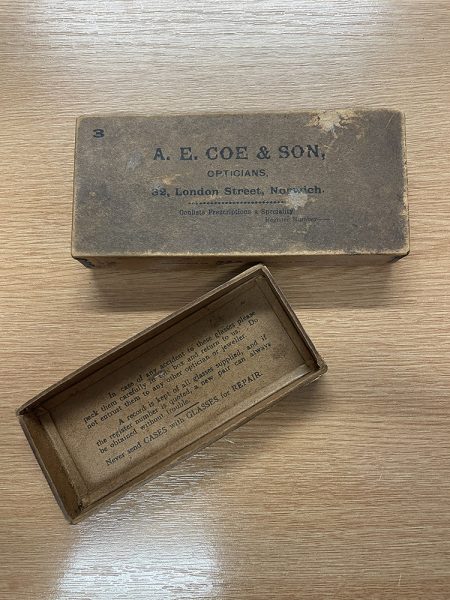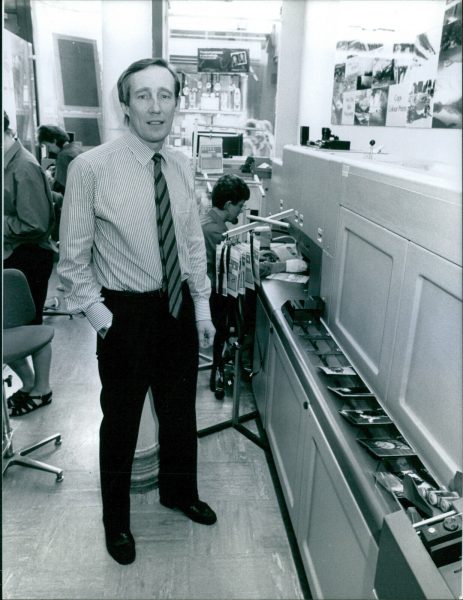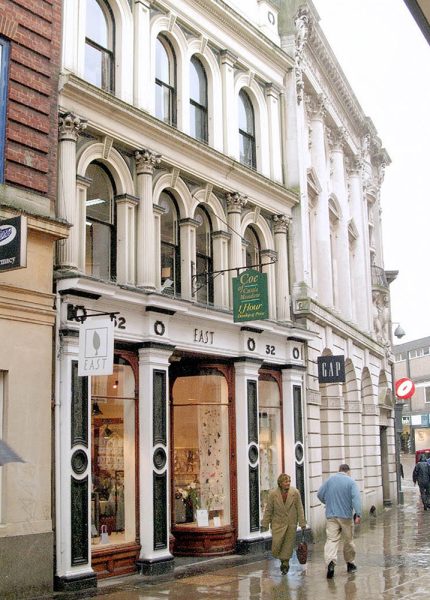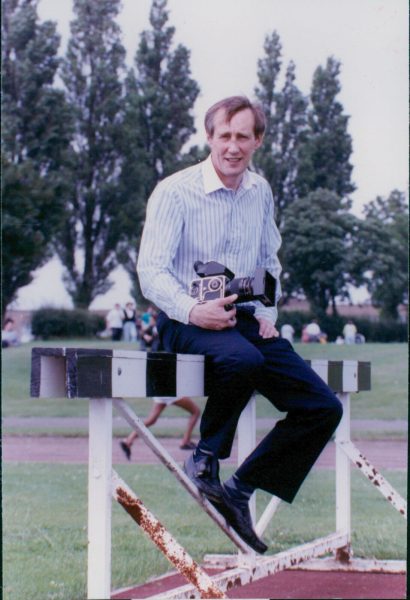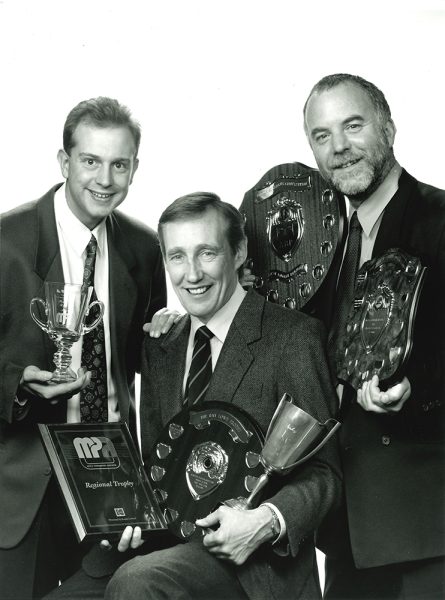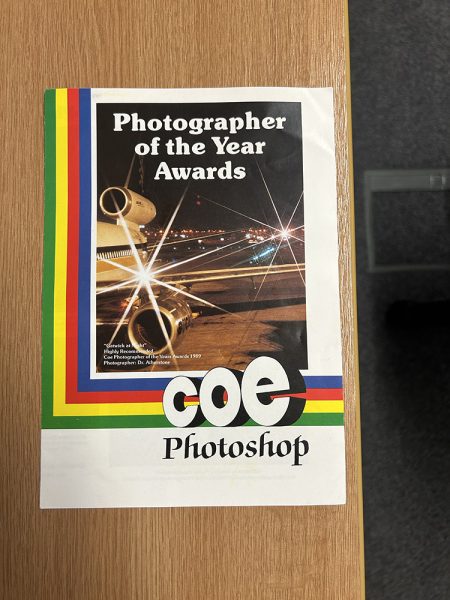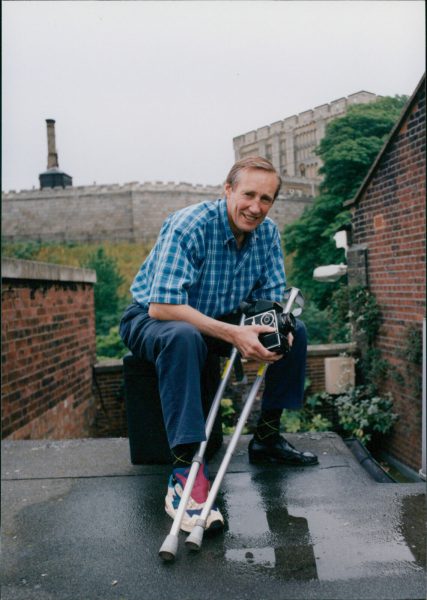It all began with John Sawyer, who advertised his portrait photography services from his home at 4 Grove Road, Norwich, in 1849.
In 1854, he leased premises at 32 London Street, Norwich, and in 1863 employed 19-year-old Albert Edward Coe to manage the company. In 1883 Albert Edward Coe bought the business, and the original studio was used until 2005.
Andrew, the current owner of the business, is Albert Edward Coe’s great-grandson. He has achieved many national and international portrait awards, along with being chosen to be the Portrait Photographer for the British Olympic Team in Barcelona and Atlanta.
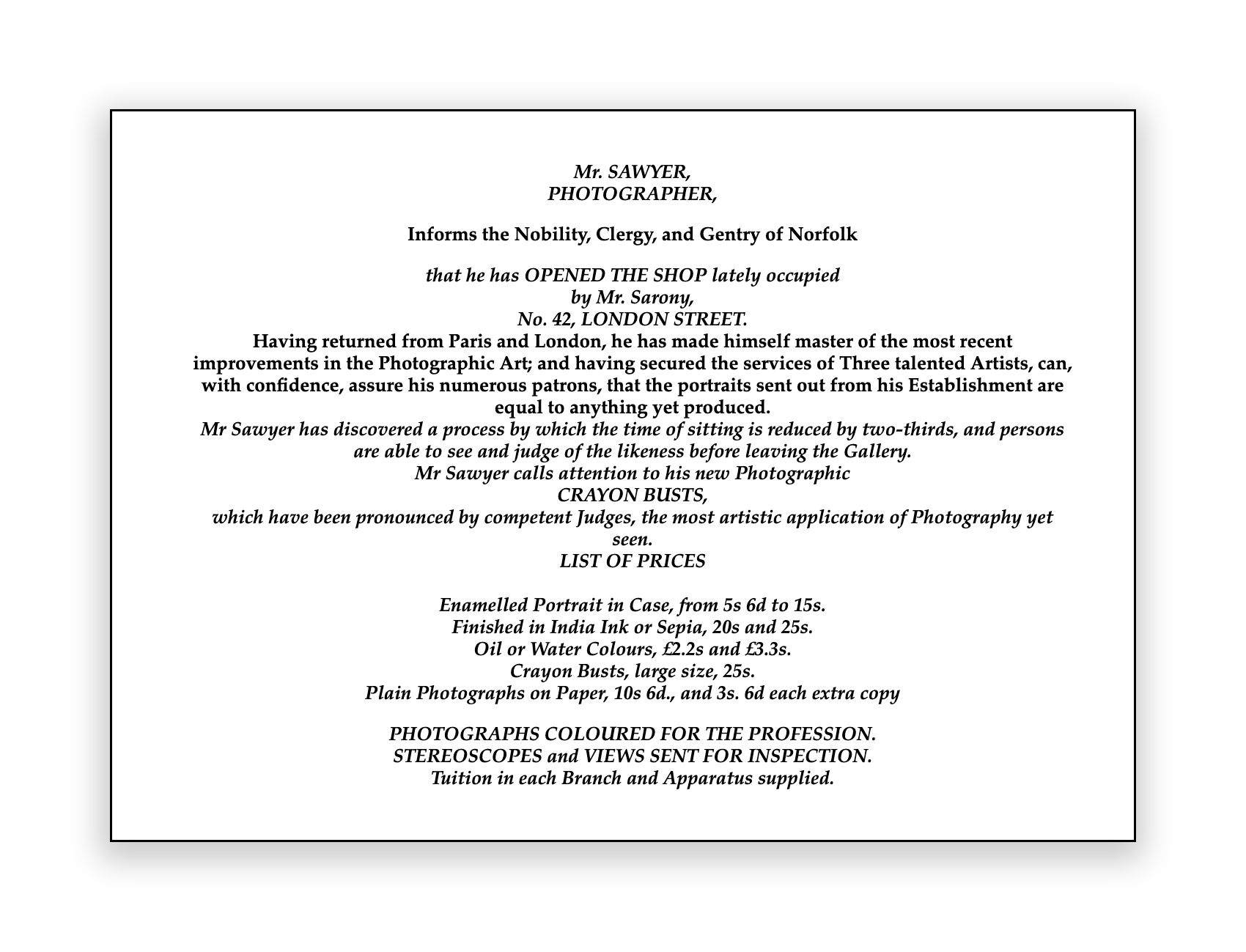
Actively seek quality rather than low cost
In 1863 he employed 19-year-old Albert Edward Coe to manage the business (Andrew Coe, who currently owns the business is his Great Grandson). Sawyer purchased the premises at 32 London Street from the Norwich Health Board in 1864.
Albert Edward Coe was a founder member of the Norwich Photographic Society (one of the first in the world) and frequently exhibited his photographs in exhibitions in London and many European cities.
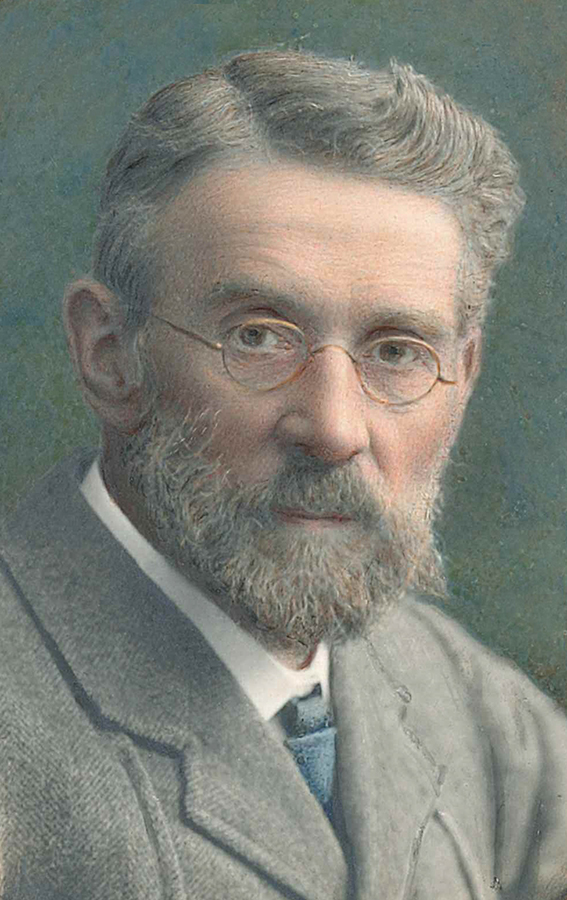
1860 – 1870
Sawyer was one of the few Carte de Visite photographers to actively seek quality rather than low cost.
Carte de Visite are small photographic portraits mounted on card which were first introduced in the early 1850’s. They were cheap to produce so for the first time many ordinary people could afford to have their pictures taken. Despite their name, they were not widely used as calling cards.
They bore the studio motto “Solum Certissima signa seqntur”, which can be translated as “Most sure are the signs which attend the sun”.
“Cartomania” was really born once Queen Victoria had embraced the craze, with hundreds of millions of cartes being produced nationally every year. By 1861 his business was producing 300 cartes per week. By 1862, 2000 per month, by 1865, over 1000 per week from his studios in Norwich and Ipswich. By 1868 there were over 25,000 negatives illustrating the fast-growing success of both Sawyer and the Carte market
1871 – 1882
By 1869, Sawyer, who was concerned by the lack of permanence in photography, had taken up Callotype, an early process of permanence. In 1871 he moved to London and became a Director of the Autotype Company, the premier publisher of photographs in permanent ink.
The Times 1873: “The photographs of 20-25 years ago are now faded and lost, however, by the cumulative of successive inventions and improvements, means have been found for reproducing pictures photographically, but in printers’ ink or other permanent pigment…with absolute safety against the ravages of time. They are called Autotypes, and patents have been granted to the Autotype Fine Art Company”.
This company still exists today.
1883 – 1902
Albert Edward Coe who had been managing the business at 32 London Street and 13 Castle Meadow since 1863, takes over and renames it Albert E. Coe (late Sawyer & Bird) in 1883. He also qualifies in 1889 as an optician, as well as a photographer.
The business continued with a mixture of photography and optometry until Mr Neville Coe (grandson of Albert Edward) retires in 1969. At that point, A. E. Coe & Sons Ltd ceased operating optical services. However, a separate company Coe, Costa & Moore continue as opticians in Norwich.
Albert E. Coe’s son, confusingly also called Albert Edward Coe, joins the business in 1896. He was an optician, not a photographer. The company continues to regularly receive requests for images of ancestors, taken by Albert E. Coe from the last century. For example, in 2107 we received a request for a negative for a print of the Reverend Vincent Raven, taken in 1885.
On June 22nd, 1897, a tethered balloon carried people aloft for a breathtaking view of the city (Norwich) to celebrate Queen Victoria’s Jubilee. One of those who climbed into the basket was 53-year-old Norwich businessman and photographer Albert Edward Coe. He turned his camera towards Norwich Thorpe Railway Station and laid the foundations for a pioneering tradition of aerial photography, which was later to blossom in Norfolk as nowhere else.
With his son, Mr Edward Coe, he took the first x-ray photography produced in Norwich.
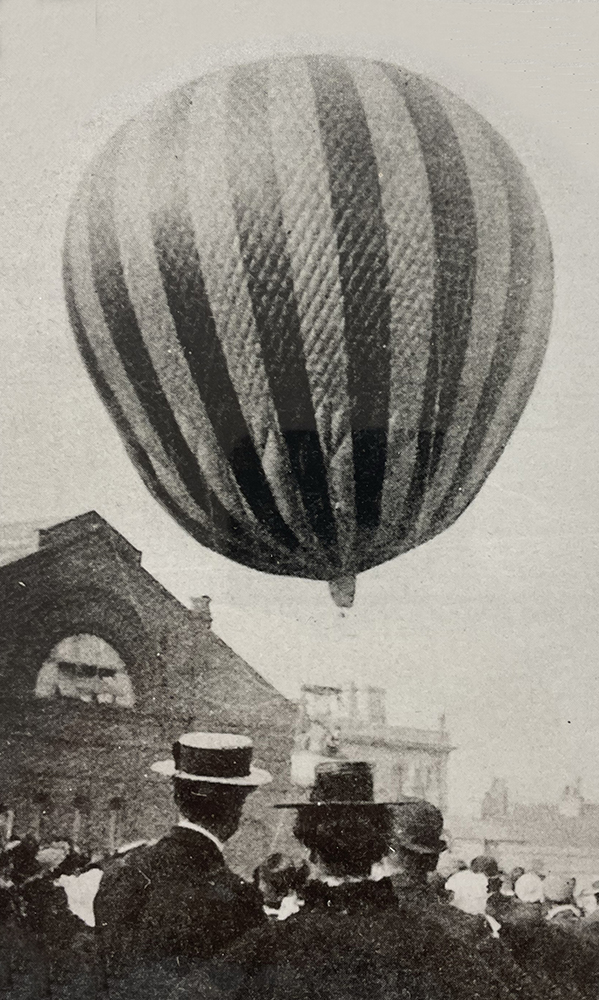
1903 – 1914
In 1903 Albert Edward embarked on a holiday to the Mediterranean, complete with a large, heavy, wooden camera with tripod and 7”x5” glass plate negatives. He visited all the major archaeological sites in Sicily, Istanbul (then Constantinople), Ephesus and Athens.
The company has all the glass negatives, purchased recently from an auction in New York. It is not known how they found their way there, probably from Norwich Library.
By 1903, the mention of Sawyer & Bird is removed from the title of the company.
The company still has the stock records from 1906 onwards. It is interesting to note that in 1906 ear trumpets in stock were valued in today’s money at £4026.08.
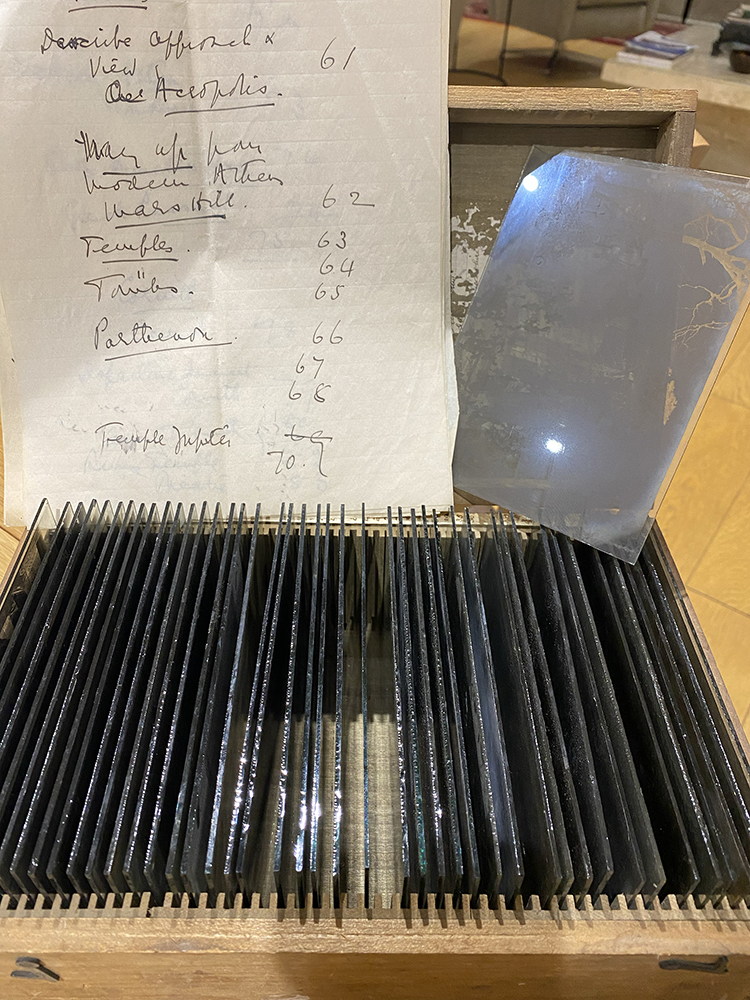
For many years A, E. Coe & Sons Ltd at 32 London Street was the largest camera shop in East Anglia, also stocking many other optical items, including binoculars, telescopes, magnifying glasses etc.A.E.Coe and Sons are commissioned to film and photograph King George V at The Royal Norfolk Show at Crown Point on June 28 1911.
The notes accompanying the film: ‘He was given a tremendous welcome by nearly 10,000 children who gathered in the Market Place and sang the National Anthem and Land of Hope and Glory to HM under the direction of Mr J.Dobson. The King sat in his coach with a look of delighted astonishment at the enthusiasm of the crowd of children and adults in the Market Place.‘
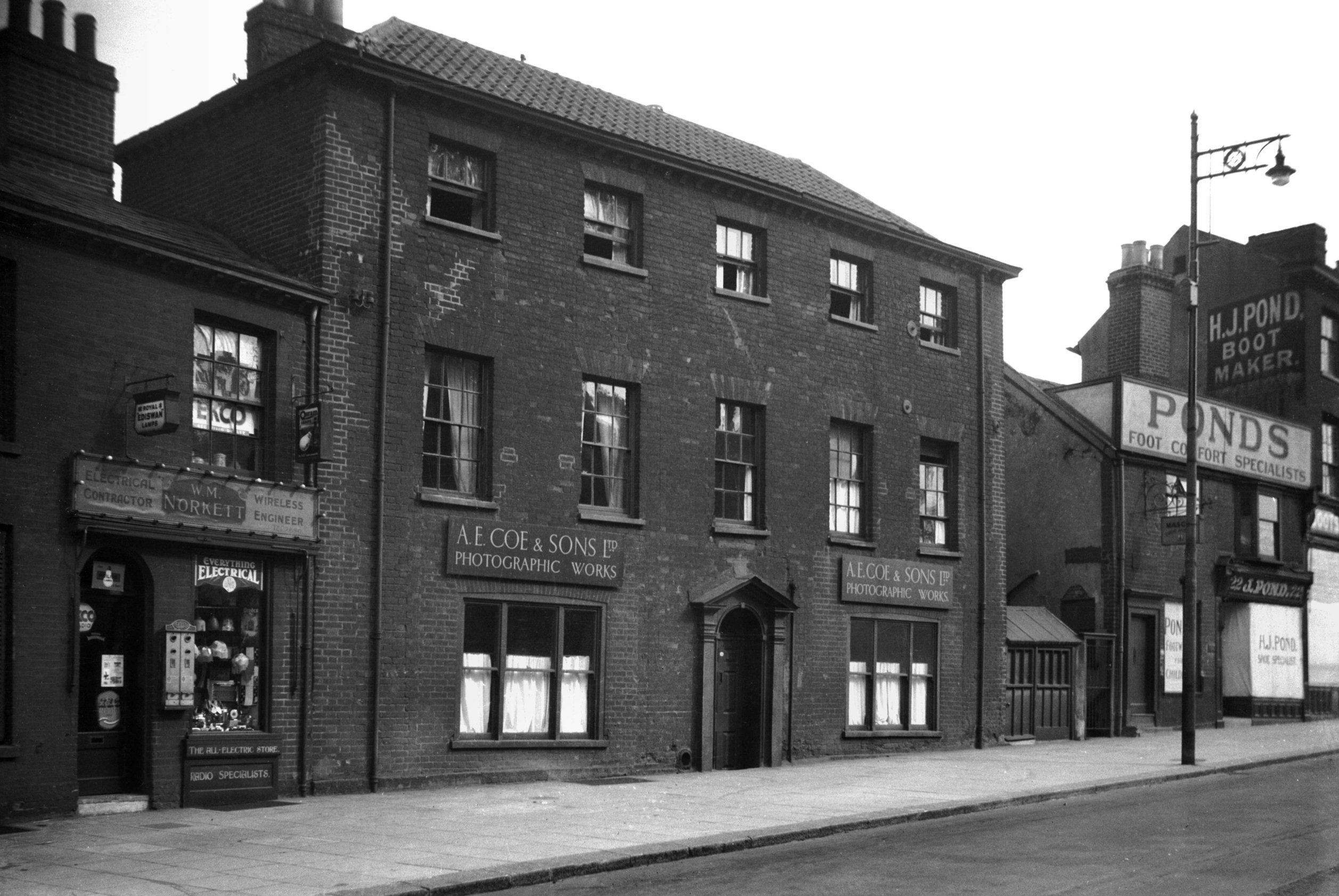
1915 – 1928
Perowne Coe, youngest son of Albert Edward, who had gained a double first in Classic at Brasenose, Oxford, was a Captain in the First World War, was wounded three times, and awarded the Military Cross in 1916. Presumably, Perowne had access to the latest cameras and photographic techniques and was able to take many unique images on the battlefields at Ypres and Arras, and many aerial photographs (marked top secret), of the German trenches.
After the war, Perowne came back to England but did not join the company. He eventually became Postmaster general of Kuala Lumpur, in the British Colonial Service. He was imprisoned during the Second World War by the Japanese in Changi, in Singapore.
He lived for another 25 years, but was not the same man. Imprisonment had taken its toll. He is mentioned in the Antiques Roadshow WW1 book, written by Paul Atterbury.
As might be expected from one of the leading portrait studios, A. E. Coe were responsible for many WW1 soldiers’ portraits, 154 of which are held at the Norwich Records office.
The freehold of 32 London Street, with the original studio, was purchased by Albert E. Coe on 9th December 1920 from the descendants of John Sawyer.
1928 – 1936
Albert Coe died on 3rd August 1928, aged 84 years. Having spent the morning in his photographic shop, as usual, he went for a motor car ride in the afternoon and was taken ill. He died that night at “Benavie”, his home in Unthank Road, Norwich, leaving a widow, two sons, a daughter and a photographic tradition which is a legacy which lives on to this day.
At 1pm on Monday 28th January 1929, a meeting was held at 32 London Street, to establish a Limited company, A. E. Coe & Sons Ltd. The Directors and Shareholders appointed were Mr. A. E. Coe, son of the original A. E. Coe, founder of the business, and his grandsons Edward and Neville Coe (father of the current owner).
It is interesting to note that a remuneration was voted of £2000 (£150,000 in today’s money) for Mr. A. E. Coe! This remuneration would not have included his income from being an optician.
1936 – 1950
The company purchased 20 Castle Meadow in 1936 for £2500. Albert Edward Coe, son of the founder, died on 22nd October 1936. His sons Edward Coe and Neville Coe continued with the optical side of the business and employing managers to run the photography.
The advent of WWII had an immediate effect on sales, it being noted in the minutes “Generally, the reduction in turnover was attributed to war condition”. It was noted that during the last two months of the year, that trade had not been so good and had reduced by 10%”. It was further noted “steps to protect company records against fire and air raid risks were discussed.
It was agreed that the negatives stored in an adjacent building, 20 Castle Meadow, would be destroyed as they were a fire risk”. This resulted in the company’s massive archive of historic negatives being lost forever.
1951 – 1963
There were Government budget proposals for a purchase tax on portraits. The Federations were having discussions with revenue officials.
A.E. Coe & Sons became one of four companies selected to have the new Agfa Colour Process.
It was recorded in the minutes “…the British Licensees were endeavouring to agree prices”. 1st September 1960, the company resolved that Andrew Coe, today’s current owner, be accepted as a Photographic Apprentice, from 28th September 1960, and that he be entered as a pupil at London Polytechnic Institute, for training in the Profession of Photography, and allied processes and subjects.
At the time, this was the only place where a degree in photography was available.
1951 – 1963
Edward Coe, oldest grandson of Albert Edward, dies, and his son Mark, who is in the army, becomes a Director and Shareholder, giving him 50% ownership of the business.
It was noted in the minutes “It was clear that right now we are heading for at least a £2000 loss next year. Something drastic was necessary. A certain amount of advertising on buses had been tried”.
In 1966, following the abolition of resale price maintenance, further financial pressures are placed on the company. There was large scale price cutting by a new chain of camera shops, Ascots, later to become Dixons. On 17th January 1969, Andrew Coe was appointed as the Manager of the commercial photographic business at the Mountergate premises.
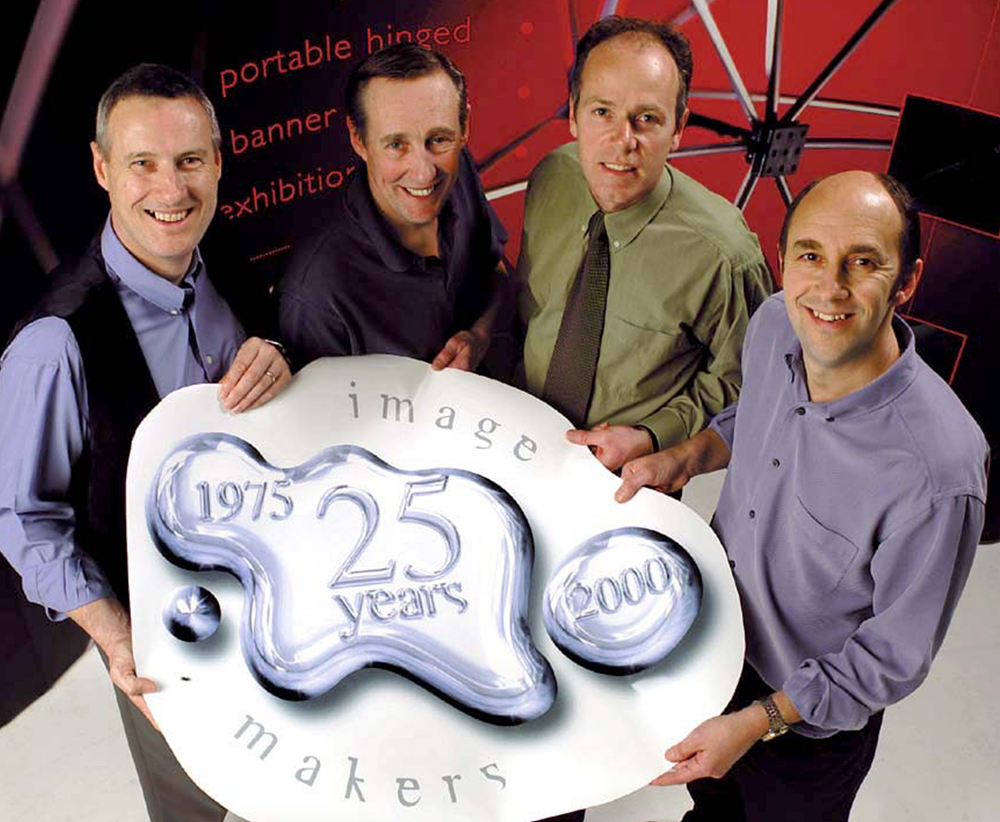
1971 – 1979
The company invested in £50,000 in colour processing equipment for wedding photography and became the first photographic company outside London to take weddings in colour. In 1971, the company was doing 10 weddings a year, by 1975, this had increased to over 500, all in colour.
They were also able to advertise colour services at the same price as wedding taken in black and white, which gave them an enormous benefit over competitors. The company returned to profitability.
In 1975, Andrew Coe moved the Commercial photography of A. E. Coe & Sons into GGS Photography Partnership, complete with a drive-in studio for room sets.
This remained the largest commercial and advertising photographic studio in East Anglia for the next 35 years before ceasing with the advent of Covid-19.
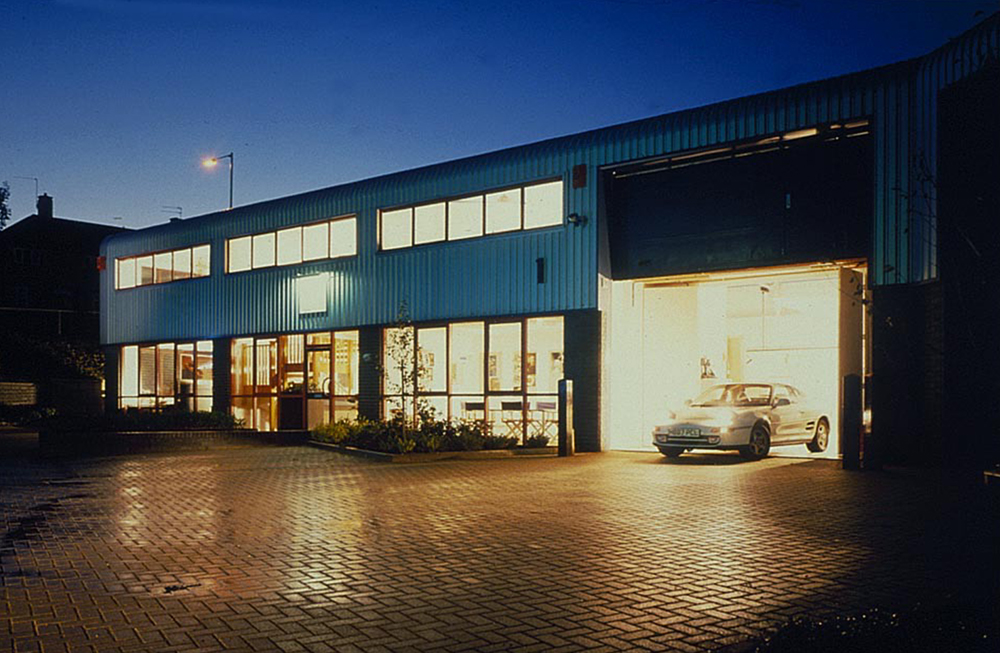
1980 – 1989
Andrew Coe ran the New York marathon in 1981 and became aware of one hour colour processing shops for amateur photographers. In that year, the company opened the first one-hour processing mini-lab outside of London. Following this, an additional company was formed, Anglia Supercolour, which grew to 37 mini-labs, each with a Portrait studio and wedding service attached. The company grew to employ 360 people. In 1984, Kodak purchased 15% of the company for £415,000.
Andrew was elected as the President of the Association of Photographic Laboratories, which at the time was the largest photographic trade organisation in the UK. In this capacity, he was a keynote speaker at the Photomarketing of America National Conference in Chicago in 1985, along with the Chief Executive of the Fuji Corporation
In 1981 Lieutenant Mark Coe, who owned 50% of the company was killed by the IRA. This necessitated the sale of 32 London Street, where the original studio was situated, on a lease back arrangement. Andrew Coe became sole owner of the business.
During this period A. E. Coe & Sons Ltd established a large graduation photography company, being commissioned by amongst others, London Institute, Cambridge, Durham, Queens Belfast, and Nottingham Universities. In 1987 all the Anglia Supercolour shops were sold to Kodak Express and Snappy Snaps. The Norwich studio and mini-lab remained under the ownership of the Coe family.
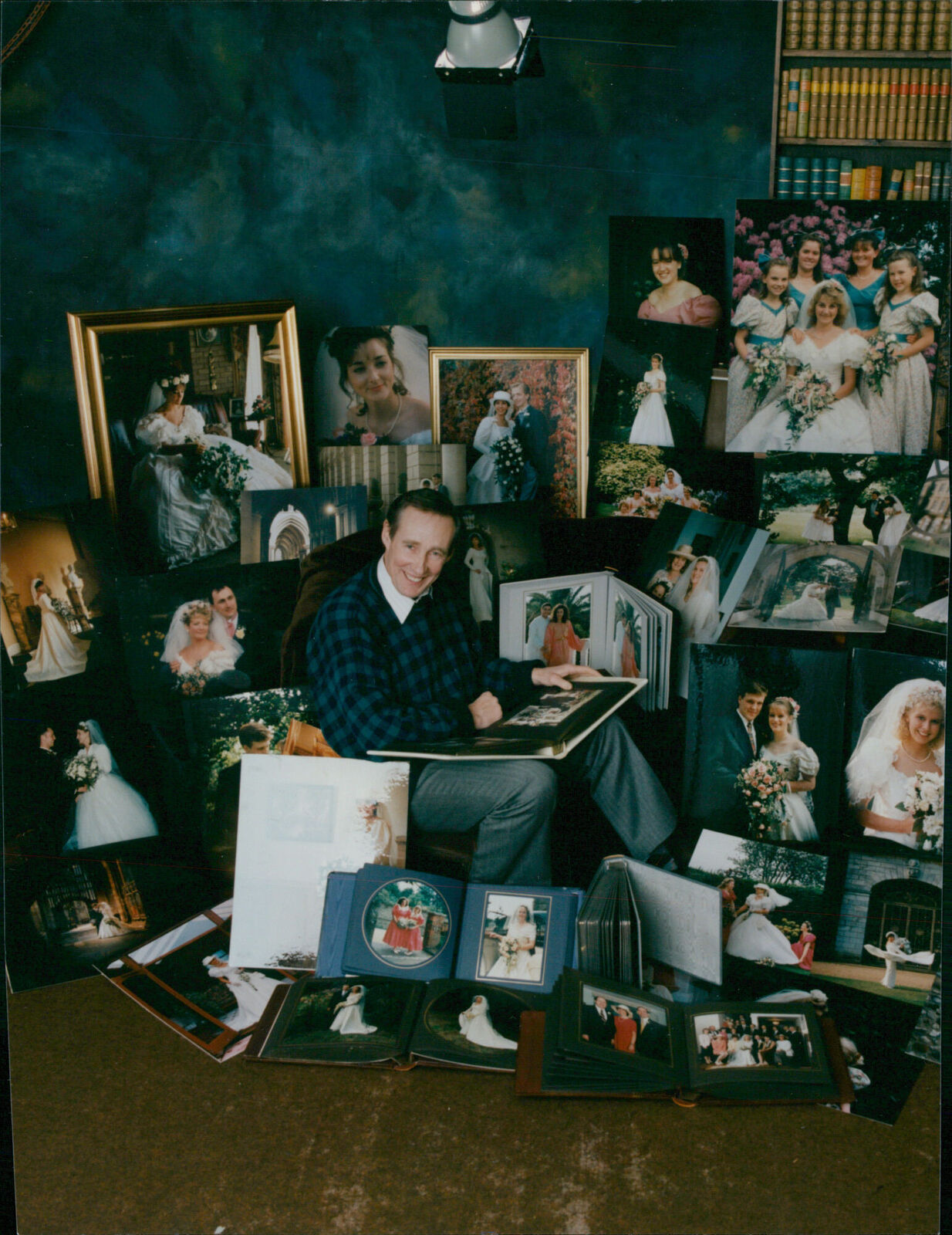
1990 – 1999
Following the sale of Anglia SuperColour, Andrew, who was 50 years old and had not taken photographs for 17 years, decided to engage in wedding and portrait photography in 32 London Street, following the retirement of his Manager, Peter Montague. He continued to use the original studio, which had opened in 1854.
This studio was unique in that it had a domed ceiling which originally had been glass, and all the photographs taken with natural light. This was not covered over until 1936.
During the 90’s Andrew won multiple portrait and wedding awards in the UK and America, which led to speaking engagements in Las Vegas, New York, Madrid, Cologne, Naples and in the UK.
During the 1970’s and 80’s wedding photography became very posed and stylised. In the early 90’s Coe’s were the first wedding photographers to introduce ‘Reportage’ photography at weddings.
He was presented with a Presidential Award in 1994 from the Master Photographers Association “in recognition of his outstanding contribution to the MPA and the wellbeing of the photographic industry”.
He was also presented with a long service award by the British Institute of Professional Photographers.
Andrew was appointed as the official photographer to the British Olympic team in Barcelona in 1992 and Atlanta in 1996.
During this period, the combined operations of wedding and portrait photography, and a mini-lab, enabled sales of over one million pounds each year for 10 consecutive years.
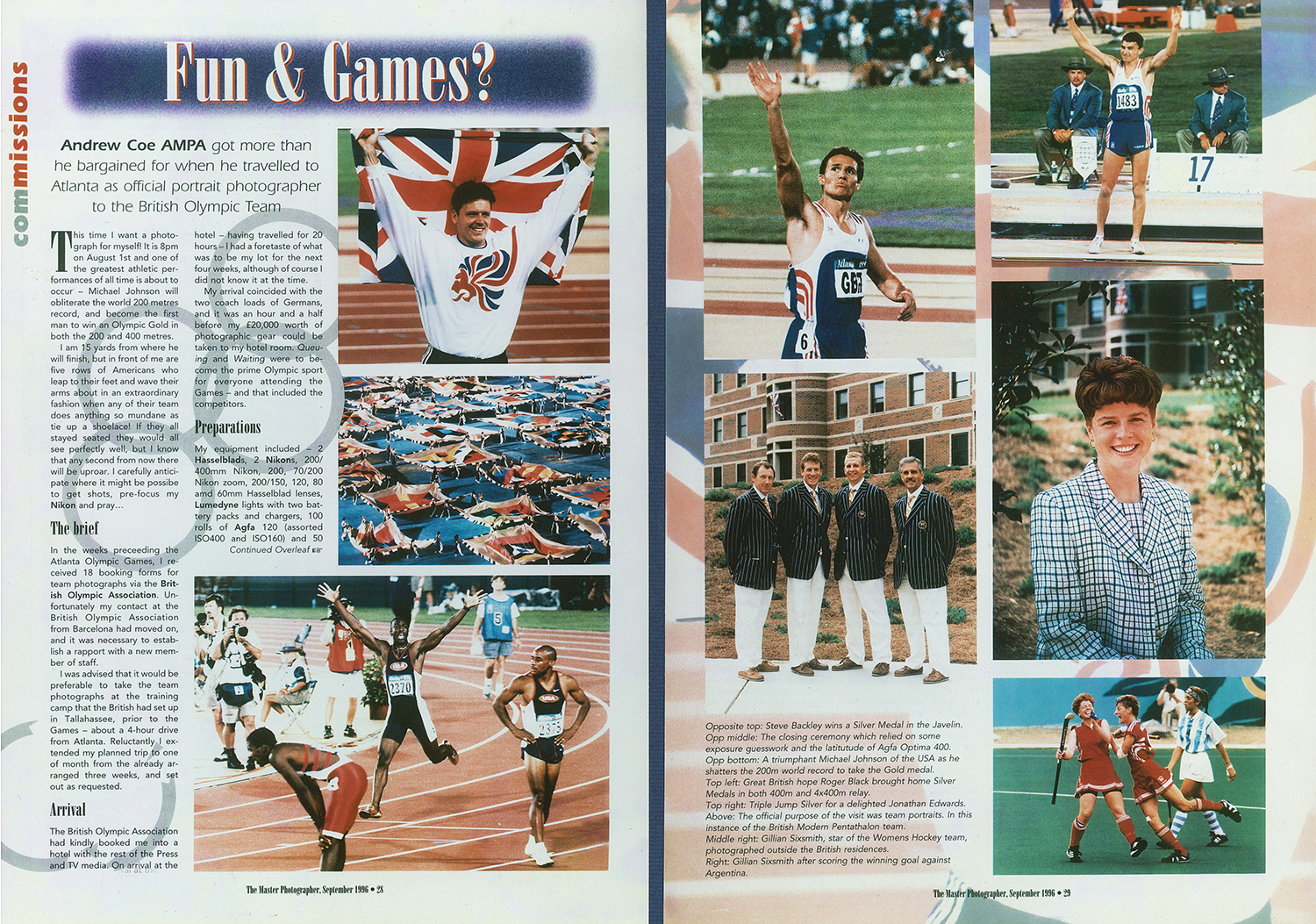
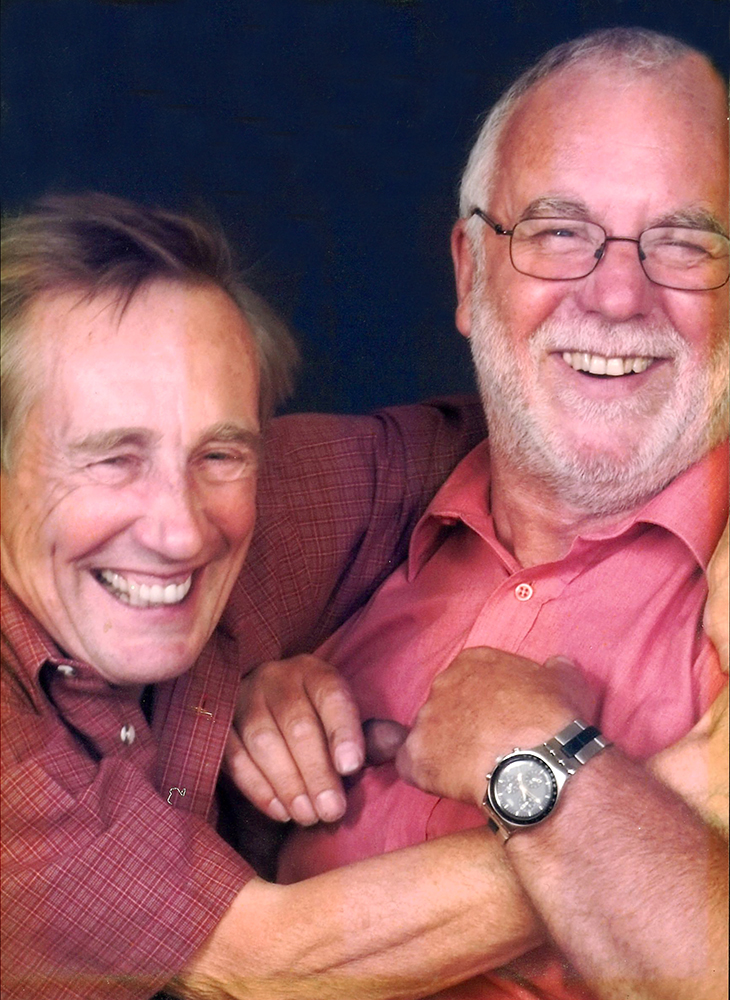
In 1995, whilst travelling to New York with Brian Barrett, and award winning East Anglian photographer to enter prints in the competition for The Loan Collection, they decided to create a training and franchise company, Barrett & Coe Ltd.
Sadly, it was during this period, in 1994, that the Norwich Library burnt down, destroying many of the negatives that A. E. Coe & Sons Ltd., had donated to the Norwich City Archives at various times during the previous 100 years.
2000 – 2011
By 2006 Barrett & Coe Ltd were training 60 people a year to become full or part-time portrait or wedding photographers and the franchise rose to 60 wedding photographers, many of whom had come from their training courses. To obtain a Barrett & Coe Diploma, it was necessary to complete a full practical day with models and sit a two-hour written examination. It was the only qualification in the UK for portrait and wedding photography that had such demanding standards.
Andrew Coe was a qualified teacher and was commissioned by the Board of National Vocational Qualification (NVQ) to write the first NVQ Higher National Diploma in Social Photography (equivalent to a Higher Education Certificate/BTEC), marking him out as being recognised as one of the leading trainers in the UK.
Following the advent of digital cameras, the wedding market became saturated and over a period of two years the franchise changed to exclusively a portrait studio franchise at the upper end of the market. National contracts were obtained, notably with Emma’s Diary to provide bookings for franchisees. In 2011 Brian Barrett had to retire due to ill health, and sadly passed away in 2019.
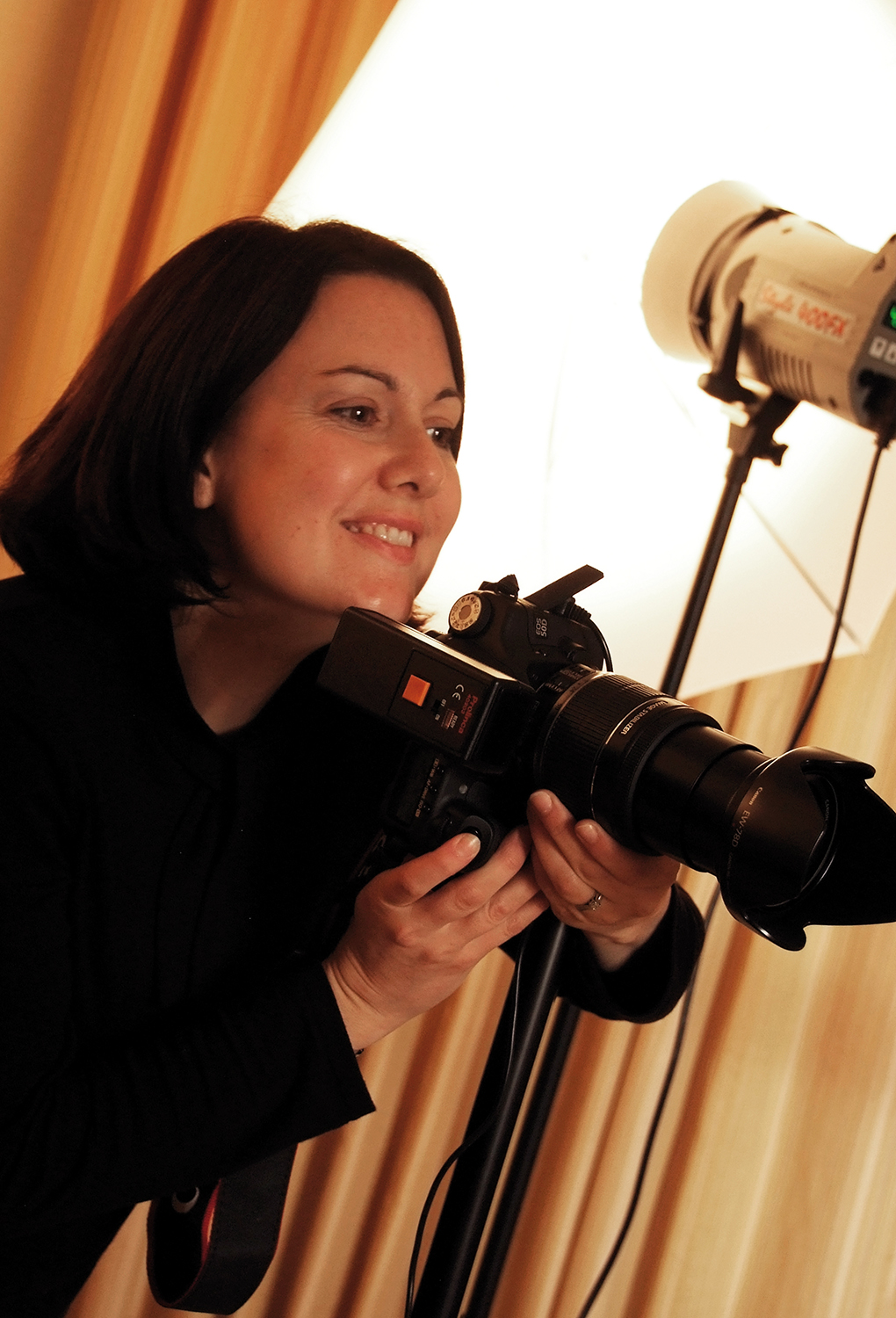
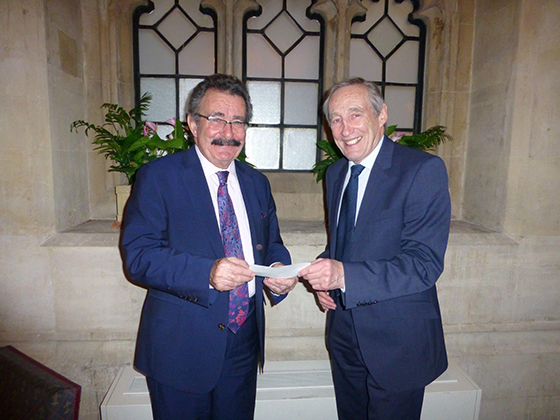
2015 – 2022
Barrett & Coe extended their services to high quality independent studios and now book over 10,000 portrait appointments for 100 studios all over the UK, including their own franchisees.
Successes are the Baby of the Month promotion where, since it began, over £78,000 has been given in prizes to mums and babies. Also, £50,000 has been donated to the Sheldrick Wildlife Trust for saving and reintroducing orphan elephants into the wild.
Also, £50,000 has been donated to Professor Lord Winston’s Genesis Trust, which progresses the understanding of miscarriage, stillbirth, preterm birth, and reproductive cancers. Recently, through our Superdog of the Month competition Barrett & Coe have started to donate to Hearing Dogs for Deaf People.
2023 – present
Barrett & Coe are currently launching a number of company owned portrait studios in the UK, and have signed a number of new national contracts to continue to support their customers and this extension to the business.
